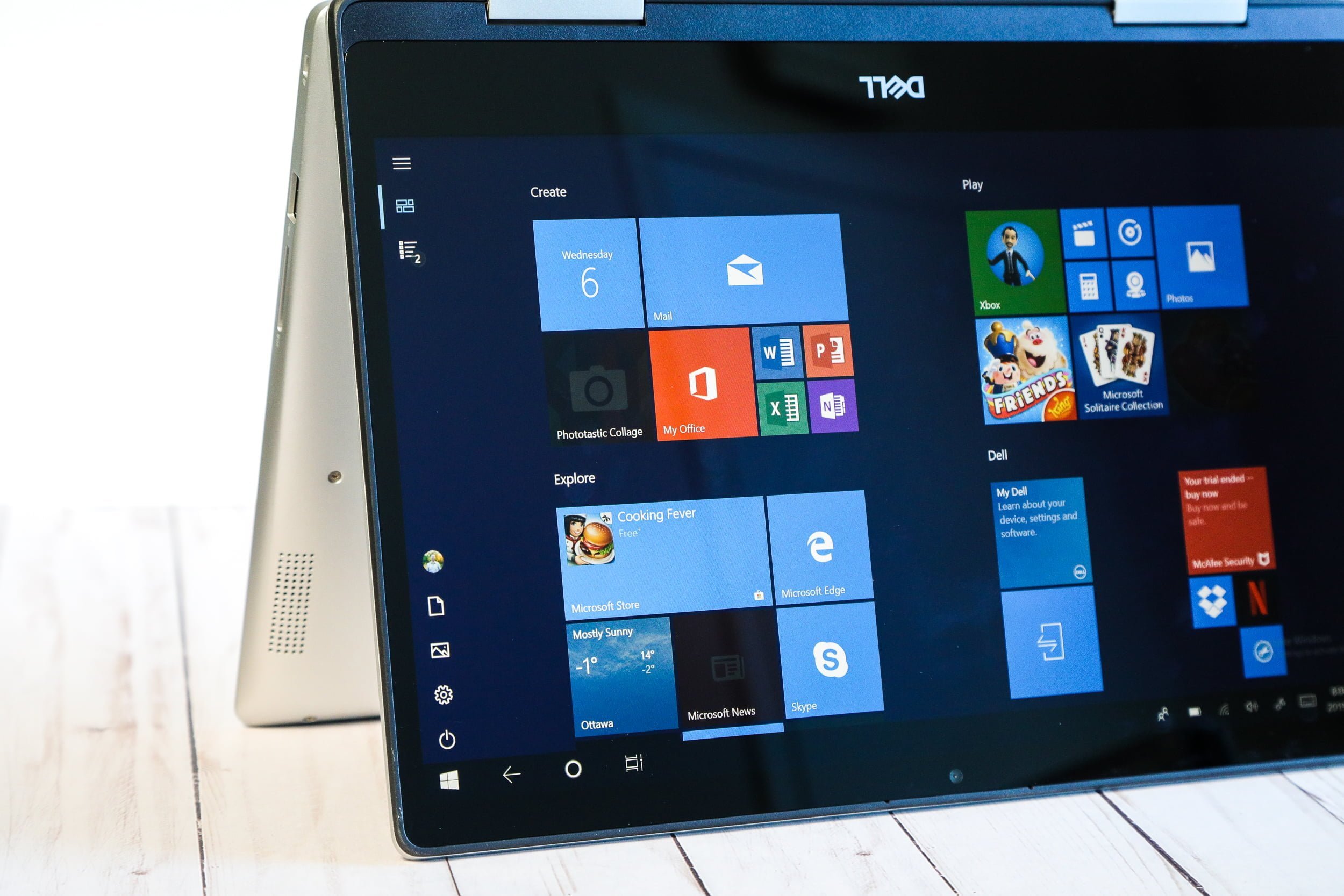For the user who wants a versatile device, 2-in-1 laptops are smartly priced, functional systems that can go far, and the Dell Inspiron 14″ 5000 2-in-1 checks off a lot of boxes for your average user and their needs.
Starting at $679, the model 5482 goes up to $1249, depending on the configuration, with options for 8th Generation Intel Core i3, i5, and i7 processors.
So how does the 2-in-1 stand up in testing? Read the full review below as I go through some of the key things to keep in mind if you’re looking to buy this flexible laptop.
Features & Specs
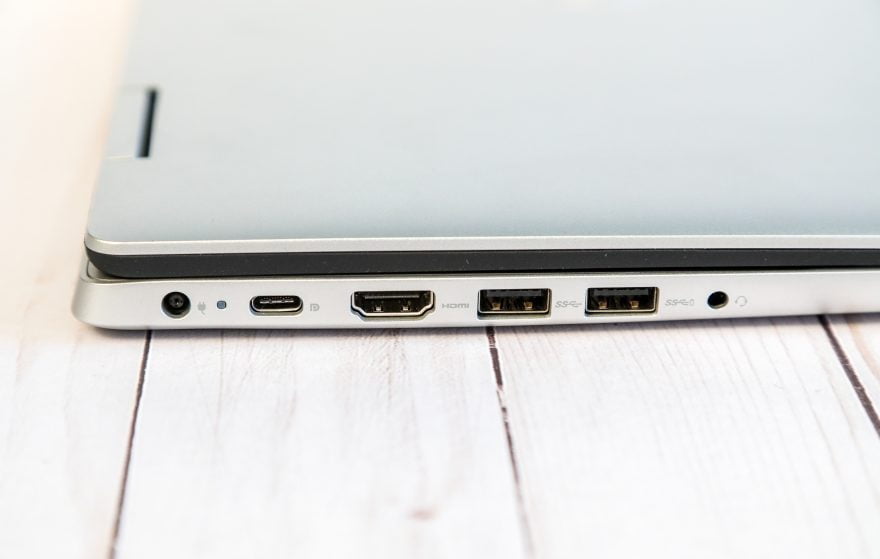
The Dell Inspiron 14 5000 2-in-1 has a touch sensitive 14″ FHD IPS LED-backlit display that is crisp and clear, and the Intel UHD Graphics 620 card is more than powerful enough to handle light gaming, full-screen HD videos, and your program or app needs.
From YouTube to downloaded videos off my phone and camera, the display on the Inspiron 5000 was very good, but I would suggest the screen is a bit too reflective and not quite as bright as I would have liked. In bright conditions, when the sun is out especially, I had a harder time seeing everything clearly, but I would still say it’s still a respectable display for the price, and the viewing angles are great too.
In terms of the ports, the Inspiron 5000 2-in-1 has everything you would expect, including an SD card reader, USB 2, USB-C, HDMI, 2 x USB 3.1, and an audio jack.
RAM options start at a very light 4GB on the cheaper end and go up to a very robust 24GB. And storage space ranges from 128GB with an m.2 PCIe solid state drive on the bottom end, up to a combination of 256GB solid state drive with a 2TB SATA hard drive.
If you’re looking to multitask, or have programs that demand a bit more power, including graphics editing, I would certainly always recommend at least an i5 processor with 16GB of RAM, but for the price, you can go up to 24GB and an i7 on the Inspiron 5000, without really breaking the bank.
The integrated battery is a 3-Cell 42WHr is respectable, and lasts well, but it certainly may not last all users an entire work or school day.
There’s also an optional finger print reader, which is very quick and makes logging in to your system extremely quick.
In terms of the laptop weight, I would call this a moderately heavy laptop, but it’s definitely on par with others in the class and price range, I just wish it had been about half a pound lighter.
Finally, for easy switching between screen colour modes, depending on whether you’re working, gaming, or playing videos or movies, the Inspiron 5000 comes with Dell CinemaColor, which is seriously handy to jump between colours and light styles, and it makes a big difference in viewing content.
Laptop versus 2-In-1
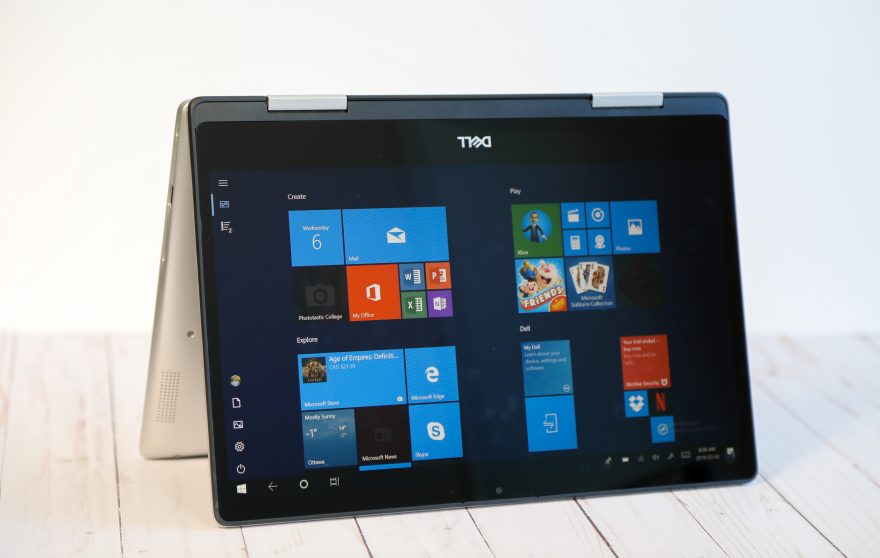
Using the 2-in-1 as a laptop, the keyboard is very good, and typing felt natural, although the keys don’t exactly feel premium, but the keyboard is at least backlit, which is something I wish was mandatory on laptops.
Flipped to tablet format, the system responded well, exactly as expected, and thanks to the fairly narrow bezels, it felt like I had a lot of room to work with.
Everything was very quick and responsive in tablet mode, and like other Windows systems, you can let the system automatically switch to the correct mode when you fold or unfold it.
Of course, the oddity I have with 2-in-1s is that, in tablet mode, the keyboard rests facing out from under the screen. The Inspiron 5000 had no problems in this orientation, but I’m always very aware that I could be mashing down keys, damaging the keyboard, or getting the keys dirty on my desk. Perhaps it’s foolish, but I’ve never felt very comfortable with this layout.
That’s why the other setup for the 2-in-1 is my favourite, and offers a layout that only a good 2-in-1 can achieve.
Standing up the Dell Inspiron 5000 2-in-1, like in the images above, tablet mode feels a lot more natural to me, and it’s also more stable. Since the laptop supports the Dell Active Pen, which is sold separately, this is also the ideal format for using the devices together as it’s easy to write and draw when it’s standing on a table.
The only oddity of this tablet mode is that the power button ends up being on the back of the laptop in this orientation, so it can be awkward to wake up the system when you want to use it. As well, the camera is on the bottom in this standing mode, which is a bit of an awkward angle, but I’m not sure there are any good alternatives to the design since it’s better to have the camera on the top when the screen is folded for laptop mode.
Final Thoughts
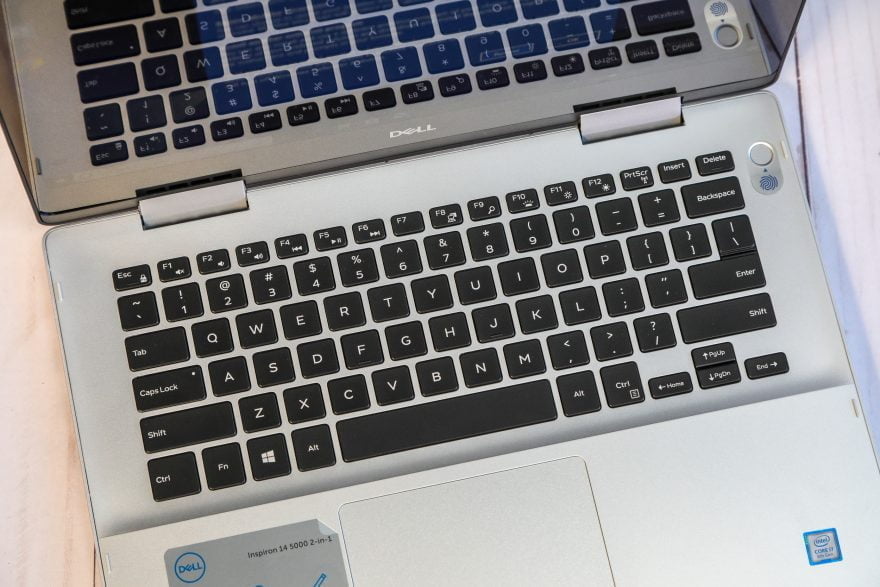
Between all the ports, the great price, all of the configuration options, and the fact that you can use the USB-C port for power or an external display (or both, with the right dock), I’m a big fan of the Inspiron 5000 2-in-1.
The 14″ display is just right, and while the system is not quite as powerful or impressive as Dell’s XPS 13″ 2-in-1 with its QHD+ display, the price is right for the Inspiron 5000.
For anyone who wants a system that will actually last them a few years, for both speed, power, and battery life, I would recommend the Dell Inspiron 14 5000 2-in-1. It’s also exactly the type of system that benefits from a stylus, so it’s worth checking out the Dell Active Pen if you want to go mouse-free in tablet mode.
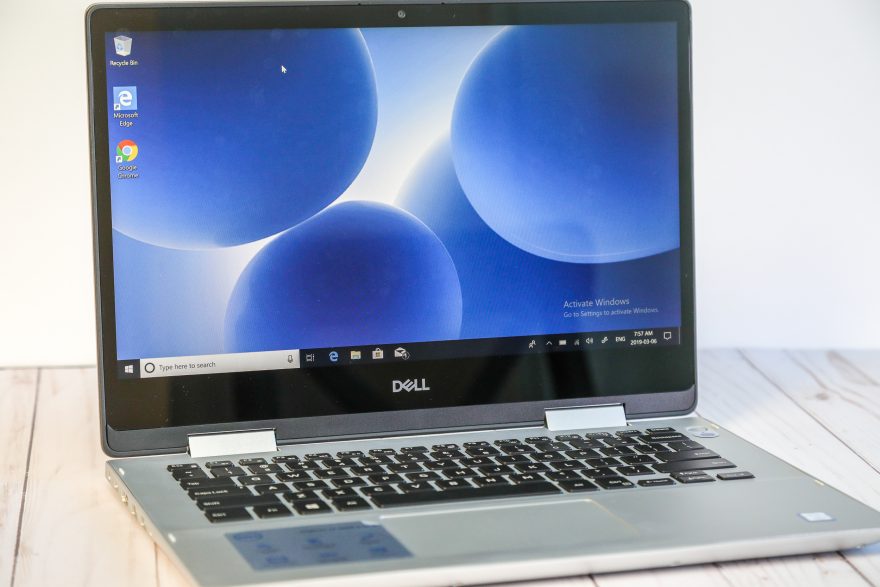
Join our list
Subscribe to our mailing list and get weekly updates on our latest contests, interviews, and reviews.

